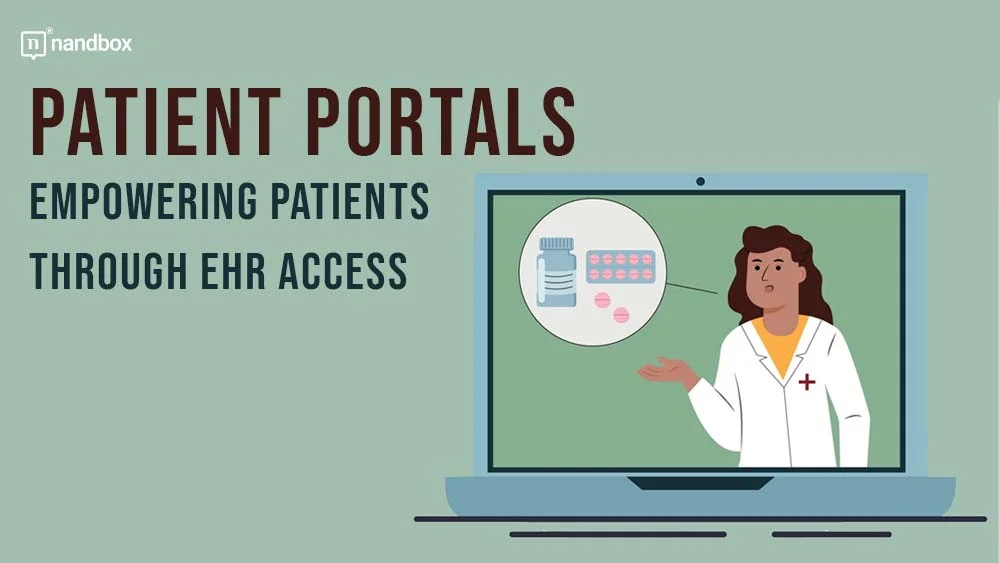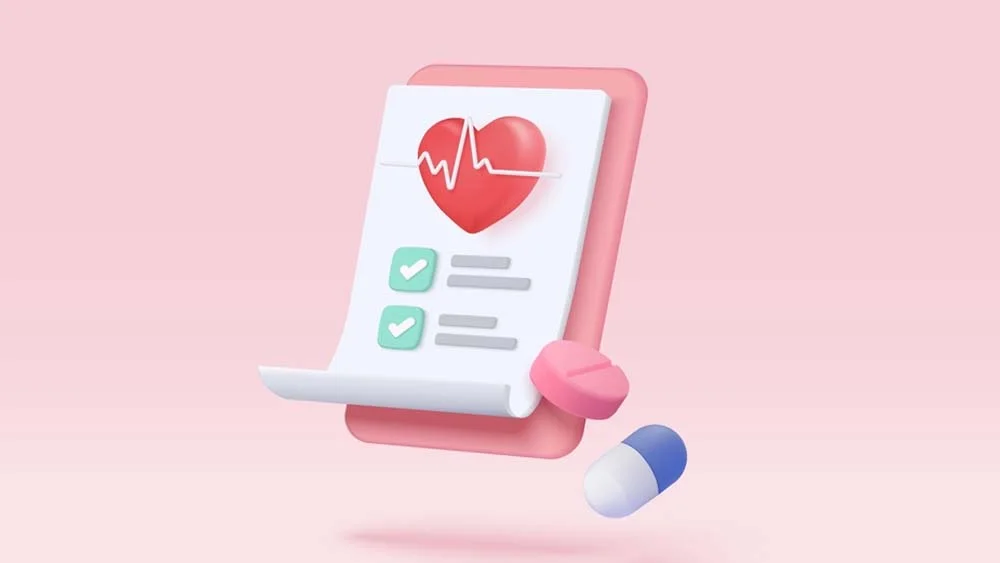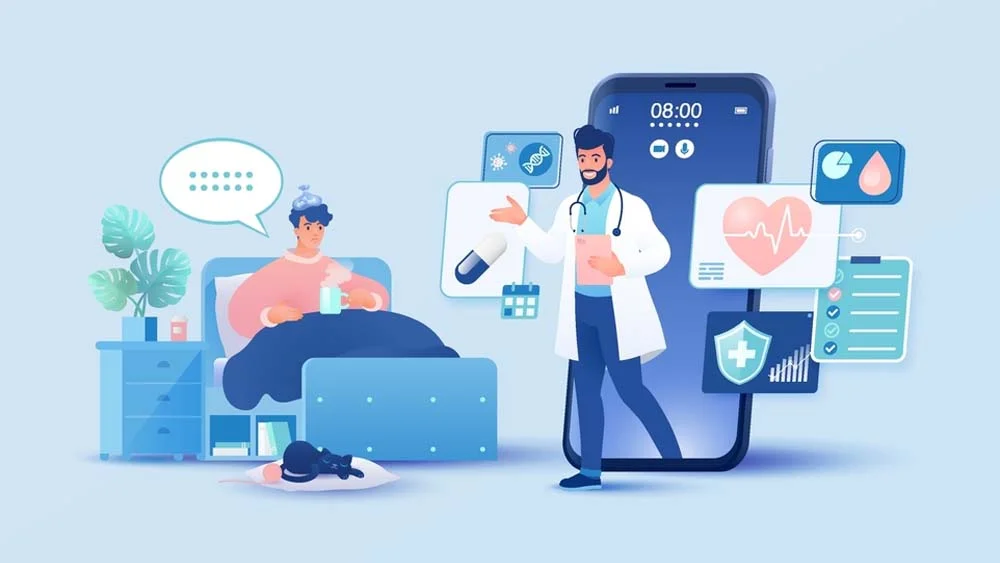In today’s digitized healthcare landscape, patient portals stand as a pivotal tool for fostering patient engagement and empowerment. These online platforms provide patients with convenient access to electronic health records (EHR), enabling them to actively participate in their healthcare journey. The implications of patient portals extend far beyond mere data accessibility. Offering opportunities for improved communication, enhanced care coordination, and informed decision-making.
Accessible Health Information at Your Fingertips
Patient portals stand as a pivotal gateway, providing individuals with unparalleled access to electronic health records. From the convenience of any location and at any time. These digital platforms offer a comprehensive repository of medical data, encompassing essential details. Such as lab results, medication lists, appointment schedules, and discharge summaries. By putting this wealth of information at their fingertips. Patients are empowered to take an active role in managing their healthcare journey. Patient portals harmonize seamlessly with EMR (Electronic Medical Record) software systems. Acting as an extension of these systems to offer patients direct access to their health data. EMR software systems serve as the backbone, storing and organizing vast amounts of patient information. Patient portal solutions, integrated with EMR systems, enable secure access to this data. Ensuring patients can view and interact with their medical records conveniently. The synchronization between patient portals and EMR software systems fosters patient engagement and promotes a collaborative approach between patients and healthcare providers by facilitating efficient communication. And access to essential health information.
The accessibility of patient portals goes beyond mere convenience. It fosters a more informed and engaged patient population. Individuals can monitor their health status, track changes, and gain. A deeper understanding of their medical history. Moreover, the seamless availability of information facilitates improved communication between patients and healthcare providers. Enabling more informed discussions during medical appointments. In essence, patient portals play a transformative role in enhancing healthcare experiences by promoting transparency. Empowering individuals, and nurturing collaborative relationships between patients and their healthcare teams.
How to Enhanced Patient-Provider Communication
Patient portals serve as dynamic communication hubs, revolutionizing the interaction between patients and healthcare providers. Embedded with secure messaging features, these platforms facilitate direct and efficient communication channels between individuals and their care teams. Patients can seamlessly engage in dialogues with healthcare professionals. Seeking clarifications on health records and discussing treatment alternatives. Or seeking guidance for managing chronic conditions.
This interactive exchange promotes a collaborative approach to care, breaking down communication barriers. And fostering a partnership between patients and their healthcare providers. Additionally, patient portals streamline administrative tasks through capabilities. Such as prescription refill requests and appointment scheduling. This not only enhances the efficiency of healthcare processes but also reduces the need for unnecessary phone calls, allowing patients and providers to engage in meaningful communication at their convenience.
The enhanced communication facilitated by patient portals extends beyond the confines of traditional healthcare interactions. It transforms the patient-provider relationship into a more dynamic and collaborative partnership. Ultimately contributing to a patient-centric healthcare experience. As technology continues to advance, the potential for patient portals to serve as catalysts for improved communication. And patient engagement in healthcare is poised to grow exponentially.
Best Facilitating Care Coordination and Engagement
Patient portals emerge as integral tools in enhancing care coordination, offering a centralized platform for patients to manage. And share their health information with various healthcare providers. With access to electronic health records, individuals can seamlessly collaborate with different specialists or healthcare settings. Fostering a cohesive approach to their well-being. This streamlined exchange of information ensures that all involved parties are well informed. Enabling more coordinated and comprehensive care delivery.
Moreover, patient portals extend beyond data sharing. Often incorporating educational resources and personalized health information. This empowerment equips patients with the knowledge to take proactive measures in managing their health. The availability of reliable health information encourages individuals to engage in preventive care. They can make informed decisions about their well-being, and adopt healthier lifestyles.
In the evolving landscape of healthcare, patient portals not only bridge the communication gap among healthcare providers. But also empowers patients to actively participate in their care journey. The accessibility of information and resources within these portals creates a collaborative healthcare ecosystem, where patients are not just recipients of care but informed partners in their health management. As the role of technology continues to evolve. Patient portals stand as catalysts for a more patient-centric and coordinated approach to healthcare. As international students navigate through the challenges of adapting to a new culture, they also grapple with the daunting reality of student loan debts, which in the United States alone have soared to a staggering $1.73 trillion, highlighting the pressing need for innovative digital communication solutions to bridge these financial burdens.
Empowering Informed Decision-Making
Patient portals play a pivotal role in fostering informed decision-making by providing individuals with comprehensive access to electronic health records. Empowering patients to actively participate in their healthcare decisions, these portals offer a detailed view of medical records, test results, and treatment plans. This accessibility serves as a foundation for a deeper understanding of their conditions. Allowing patients to explore various treatment options and make decisions collaboratively with their healthcare providers.
The transparency facilitated by patient portals extends beyond the immediate care context. Patients can review their complete medical history. And understand the intricacies of treatment recommendations. And track their progress over time. This ongoing engagement with their health information contributes to a heightened sense of ownership and autonomy in managing their well-being.
By being well-informed, patients can actively engage in discussions with healthcare providers, ask pertinent questions, and express preferences based on their understanding of the available information. This collaborative decision-making process not only enhances the patient-provider relationship. But also contributes to improved patient satisfaction and outcomes.
As technology continues to advance, patient portals catalyze transforming the traditional healthcare dynamic into a more patient-centered model. The ability to access, understand, and actively engage with health information empowers individuals to play a more proactive and informed role in their healthcare journey. Patient portals, with their emphasis on transparency and collaboration, represent a significant step towards a healthcare ecosystem. Where patients are partners in their care, contributing to better overall outcomes.
Challenges and Future Opportunities
While patient portals present significant advantages, challenges persist in realizing their full potential. Particularly concerning usability, digital literacy, and equitable access. Usability issues, including complex interfaces or insufficient guidance. It can pose barriers to effective utilization, especially for technologically inexperienced patients. Addressing these concerns requires a commitment from healthcare providers to design intuitive. And user-friendly interfaces, providing necessary support for patients unfamiliar with digital tools.
Digital literacy remains a challenge, with varying levels of technology proficiency among different demographic groups. Bridging the digital divide requires targeted educational initiatives and accessible resources to ensure that all patients can benefit from the functionalities of patient portals.
Equitable access
Equitable access is another critical consideration. Disparities in technology access among different socioeconomic groups can create inequalities in healthcare. Healthcare providers must work towards ensuring that patient portal usage does not exacerbate existing disparities. But rather, it serves as a tool for inclusive and accessible healthcare services.
Looking to the future, patient portals hold great potential for further integration with emerging technologies. The incorporation of artificial intelligence (AI) and machine learning could revolutionize patient portals by enabling predictive analytics. And offering personalized health recommendations. These advancements have the potential to enhance preventive care. And empower patients to proactively manage their health.
Additionally, the future of patient portals lies in achieving greater interoperability. Efforts to establish standardized data formats and protocols. Such as those promoted by Fast Healthcare Interoperability Resources (FHIR). Will improve the seamless exchange of information between different healthcare systems. This interoperability fosters better continuity of care, allowing patient data to flow seamlessly across various providers and settings.
In conclusion, while challenges persist, the future of patient portals is marked by opportunities for innovation and improved healthcare delivery. Overcoming usability issues, addressing digital literacy gaps, and ensuring equitable access will be crucial steps. By embracing emerging technologies and fostering greater interoperability, patient portals can become even more powerful tools for enhancing patient engagement, improving health outcomes, and advancing the overall quality of healthcare delivery.
Conclusion
Patient portals serve as a gateway to empower patients through access to their Electronic Health Records (EHR). Beyond offering data accessibility. These platforms foster improved communication, care coordination, and informed decision-making. By facilitating active engagement in their healthcare journey. Patient portals contribute to a patient-centered approach to healthcare delivery.
Healthcare providers play a pivotal role in promoting and optimizing the use of patient portals, ensuring that patients reap the full benefits of these tools. As technology continues to evolve, patient portals will remain instrumental in promoting patient empowerment, collaboration, and better health outcomes.





